Text
American Tokusatsu Part 2: Power Rangers

In the previous blogpost, I have shown some of the examples of America’s take on Tokusatsu from japan, in which they splice the action sequences from the Japanese superhero show and combined them with their own live action actors. Most of these shows had relatively short lifespans since the properties the American companies picked up were usually about one season or couldn’t garner enough popularity to continue using the IP. But where those eventually disappeared, there is one that is still going on today not just due to its availability, but to its quality as well, and that would be Saban’s (now Hasbro’s) Mighty Morphin Power Rangers series. Some might simply disregard this show as just cheesy or ridiculous, but it was through this show many people, me included, were introduced to the genre of tokusatsu.

The series’ origin begun in 1984 when the entrepreneur Haim Saban was taking a business trip to Japan, in which he stumbled upon Toei’s 8th Super Sentai series, Choudenshi Bioman, and was so amazed by it he decided to make his own attempt at a toku through his pilot Bioman. Though the pilot failed to connect with networks, he would try again through his attempt to adapt the 17th Sentai series, Chōjin Sentai Jetman. Though the company accepted his pitch, Jetman showed to be a bit too mature for a sentai series, so they decided to adapt the more light-hearted Kyōryū Sentai Zyuranger, which also had slightly more inspiration to western mythology. Saban pitched the Idea to the Fox Kids! network under his established company Saban Entertainment.
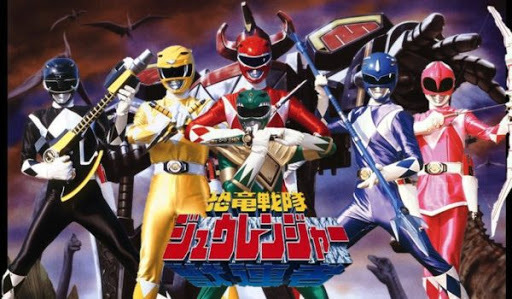
The first show of the series can be described as a product of the times, as each of the rangers were 90s stereotypes of teens of the time, where they fought monsters as superheroes and hung out at the mall as teens. Most of the cast throughout the other seasons can be described as falling into archetypes of their time as well, but they all still have a sense of uniqueness and variety that kept the series fresh. The plots of each series also vary, as they can either be one-to-one adaptations of their Japanese counterparts, like Power Ranger Time Force and Mirai Sentai Timeranger, or be completely different in terms of tone and story, Like Engine Sentai Go-onger and Power Rangers RPM, RPM having a way more darker tone than it’s light-hearted Sentai counterpart.
Many people did not expect the series to grow this big, as was said by the show’s executive producer Shuki Levy. “I’d be lying if I said we expected it to be like this, this big... But we always knew it had appeal for children, and that’s because we have created this whole fantasy world with a somewhat primitive approach.” The president of the Fox Children’s Network, Margret Loesch, expressed similar thought, discussing how “Kids are desperately in need of positive role models and, whether or not they like the show, people agree that our teen-age stars are delightful to both boys and girls, and it is extremely rare that an action-adventure show appeals to girls as well as boys”. What this shows us is that American children were attracted to Power Rangers by it’s unique style and how it drew them into a fantastical world with limited means. And while most are probably too young to truly articulate or appreciate the artistry of Toku, we can clearly see how the style can attract people with it’s uniqueness and ingenuity. And with this newfound appreciation, subtly acts as a bridge to western culture and eastern culture.
Throughout these blogposts, I hope I shown you how interesting and unique tokusatsu can be and shown you how those great aspects of Toku were adapted by a western audience. I hope you consider this also as a gateway to explore the wonderful and strange world of tokusatsu.
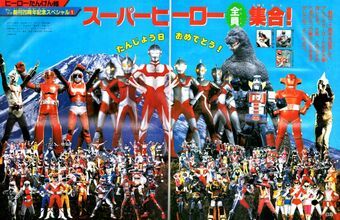
sources:
https://www.thrillist.com/entertainment/nation/power-rangers-movie-tv-saban-super-sentai-for-kids
https://www.denofgeek.com/tv/super-sentai-power-rangers-adaptation/
https://www.latimes.com/archives/la-xpm-1994-02-26-ca-27578-story.html
0 notes
Text
American Tokusatsu part 1: Lesser known series
I have shown how Tokusatsu has been very influential to not just Japanese, but to eastern culture as a whole and how their interdependent culture influenced it in many ways. But how is the style of tokusatsu incorporated in American culture? What is media inspired by Toku like in an independent society like America? While America has made attempts to adapt tokusatsu for a western audience, it is still one of the things that don’t crossover the cultural divide smoothly. This is because of a variety of different factors between Japanese and American cultures, including the independent vs interdependent cultures. But the main problem in trying to adapt tokusatsu one-for-one for an American audience comes down to the smaller more memetic differences between the two cultures that prevents the medium from truly catching on in the US. In an interview for Den of Geek, prominent ameri-toku actor T.J. Storm commented on such a phenomenon, saying:

“I always ask who the audience is meant to be. Then I look at the source material and stay close to it as I can with the new audience in mind. There are some movements in Japanese culture that do not translate. Waving your hand over your face in America it means something smells, in Japan I believe it means ‘no’.”
This comment encapsulates the issue with adapting toku for western audience. And while this issue exists, that does not stop people from being inspired by tokusatsu and incorporating it into their work, and even attempts to adapt it for a more western audience while still respecting the source material.
Throughout the years, there have been multiple attempts to adapt Toku series in ways that would satiate western audiences. The primary method of adapting Tokusatsu series into American toku is through slicing the action footage of the original Tokusatsu and splicing it with footage from American actors. One example of this would be the 1994 tv show: V.R. Troopers. This show sliced together footage from the series Choujinki Metalder and Jikuu Senshi Spielban, and while it was successful, it was canceled after the company Saban ran out of footage to adapt.

Though there have been some attempts at dubbing over the original Japanese footage, one example being Ultraman Tiga being dubbed by 4kids entertainment in 2002. Despite those exceptions, American toku mostly use the action scenes from Tokusatsu and incorporate an entirely different plot using American actors. One example of this would be the 1996 series Big Bad Beetleborgs and it’s sequel Beetleborgs Metallix, which used footage from Juukou B-Fighter and B-fighter Kabuto.
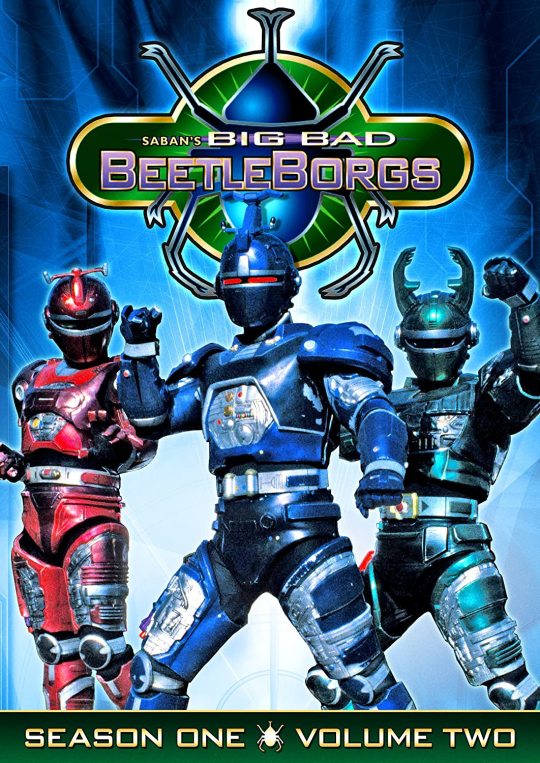
Instead of being a more action centric and violent series like it’s Japanese counter parts, Beetleborgs mostly focused on the American sitcom style of television that was popular among that time. This change is most likely due to a desire to make the series more palatable to a younger American audience so the children can relate to the show more.
While these shows were successful and even influential, they eventually ran their course as they ran out of footage to incorporate into their show. But their exists one show that not only inspired these shows, but is also still running incongruent with it’s Toku Counterpart.
Sources:
https://www.denofgeek.com/movies/american-tokusatsu-tj-storm-power-rangers-godzilla/
http://comicartcommunity.com/comicart_news/destroy-all-monsters-tokusatsu-in-america/
https://www.denofgeek.com/tv/american-tokusatsu-shows-big-bad-beetleborgs/
0 notes
Text
Tokusatsu Heroes: Kamen Rider Zero One
The concept of heroism can be considered a cultural etic, a universal idea that can span across multiple cultures, but it becomes an emic when the cultures own thoughts and feelings begin to influence the etic. Tokusatsu originated from Kaiju films but expanded to television through Japanese superheroes, one of these heroes are the titular Kamen Riders.
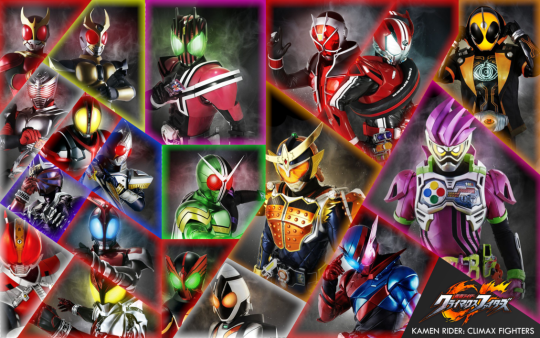
Translated as “Masked Riders”, Kamen riders were the natural evolution of the Ultraman series and Moonlight Mask, adapted from Shotaro Ishinomori’s manga series of the same name. The basic premise of the series is about an insect themed, motorcycle riding hero of justice fighting super villains and monsters, also known as Kaijin. This series has been around for about 50 years and still going, and while they went through several changes and evolution, it still maintains the Japanese core ideals of heroism and justice. While there exist many similarities between Tokusatsu heroes and American heroes, there exist subtle differences in their approach to making a hero, these differences can be explored by examining one of the latest superhero shows of Japan’s Rewia era: Toei’s Kamen Rider Zero One.
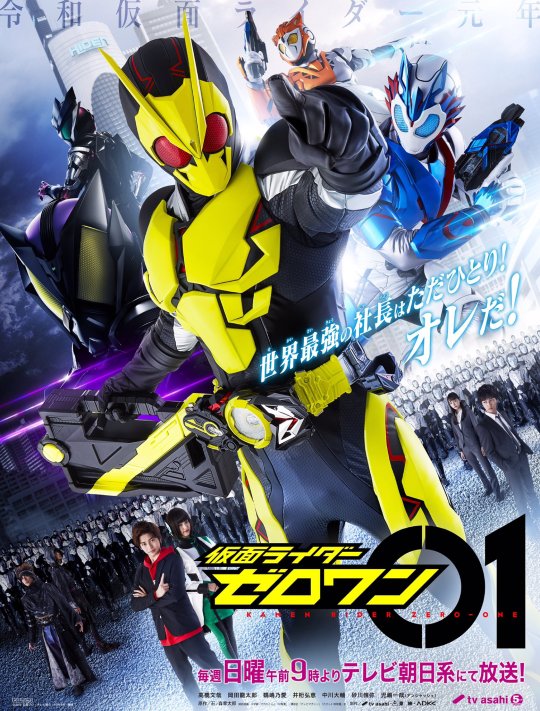
Kamen Rider Zero One takes place in a futuristic Japan where there exist advanced androids called HumaGears that help humanity with everyday life, provided by the advanced tech company Hiden Intelligence. But when this ideal world is threatened by the evil terrorist group MetsubouJinrai.net, it is up to the young president Aruto Hiden, grandson of the former president and failed comedian, to take up the company’s Zero-One driver and become Kamen Rider Zero One to fight to protect the dreams of others. Or as he himself puts it, "I don't want to ever forget the dreams I live for. That's why...I'll fight for a future where humanity and Humagears can smile together. That's who Kamen Rider Zero-One is!".

This show like many other Japanese shows demonstrate the subtle influences the interdependent culture has on the plot and characters. The basic formula of the show is a monster-of-the-week plot where Aruto explores the lives of different types of HumaGears and how their lives affect the people around them. What makes Aruto the prime example of a product interdependent culture is the fact he defines himself based on the relationship with the HumaGears, as he himself states that they are like family to him, this is because his major father figure was a HumaGear himself. So to him, it is his responsibility to defend HumaGears as a Kamen Rider and to fight for a future where they can live together with humans in harmony. Through this structure, we see how Japanese culture emphasizes the importance of interpersonal relationships, and how said relationships shape who a person is. And through this emphasis on interpersonal relationships, Aruto’s heroic persona of Kamen Rider Zero One desires to uphold the values of truth and justice, and pave a brighter path for those he cares about.

This Japanese may share many similarities to our own western heros, as they too are pillars of justice and truth. The differences between the two types of heros truly begin to show when we compare the types of conflicts our heroes might go through. For example, in the 2019 CW show Batwoman, the cousin of Bruce Wayne Kate Kane takes on his mantle to fight crime and protect the city of Gotham. As a hero of an independent society,it differs from Aruto’s journey by focusing less on how Kane is inspired and influenced by others, and more about her own inner conflicts. The series tackles Kate’s heroic struggle, exploring how her personal issues affects her ideology as a hero, this includes her feelings about her father and her lesdianism. Unlike the more interdependent hero, her conflict is mostly about aspects of herself than about the exploration of relationships that influenced her. This is not to say that one show is strictly Batwoman does not focus on interpersonal conflicts, or that Zero One doesn’t give us insight to our hero’s own internal conflicts, they both merely focus on different aspects of heroism in their own ways.

Kamen Rider Zero One may not be the definitive example of a hero defined by an interdependent culture as there sure to be more, even better examples that exist among the wide world of Tokusatsu. But through examining this show, we can at least glimpse what a culture like Japan defines a hero in their society. And even if there are differences on what western society views as superheroes, the true unifying factor both cultures can agree upon is the fact that people look up to them because of their values to defend truth, justice, and peace for all.
sources
https://yattatachi.com/tokusatsu-part-2
https://www.quora.com/What-are-some-differences-between-Japan%E2%80%99s-heroes-and-USAs-heroes
0 notes
Text
Intro to Tokusatsu

Many factors can differentiate cultures, and one major facet would be the pop culture the denizens consume. While pop-culture can borrow different ideas borrowed from other cultures, most cultures are able to add their own values and ideals in order to forge something truly unique, and this is the case for the Japanese film technique, Tokusatsu.
Tokusatsu is the shortened version of the term tokushu satsuei, which translates as “special filming”. Toku is a genre of movies and television that relies heavily on special effects, i.e. costumes and miniatures of cities. The practice was originated by the 1954 film produced by the Japanese Studio TOHO, Godzilla. The unique style of filmmaking not only propelled Godzilla to the rank of a Japanese cultural icon, it also turned it into a universal pop icon, recognized all over the world. Tokusatsu, like most pop-culture around the world, is both based on a culture’s own ideal and takes inspiration from others to create something truly unique.
Now that the groundwork and basic history has been established, we can begin to explore the kinds of inspirations and ideas that are universal in the genre. While Godzilla was responsible for popularizing the genre and coining the term, Toku had origins that preceded even it through Japanese theater. The two main inspirations being Kabuki, inspiring the action and fight for Toku, and bunraku, which is what inspired the earlier forms of special effects, mainly the puppetry and costumes. Kabuki style theatre is about showmanship, it is an extravagant style of play where the main point is to be stylized and eye-catching through the stories, costumes, and actors, while Bunraku plays involve the use of complex puppets to portray a story. These two styles of theater have less emphasis on realism like western art and more on exaggeration and abstraction.
youtube
This idea fits in well with what we learned from CLASH!, in which the origin of the different selves between the east and west comes from, the former having ideals that originate from Greece and emphasis on not only independence but also logic and realism i.e. enlightenment and the age of reason. Taking from these two genres of theatre, Tokusatsu takes the idea of deemphasizing realism and decided to indulge in the spectacle, turning them into something akin to a theater production in of itself. This aspect serves as Toku’s biggest strength, but also its weakness in our current age. Because of the dawn of CGI thanks to the success of the western movie Star Wars, audiences have become more accustomed to it and expect so see higher quality productions use it. While this doesn’t conflict with modern western film sensibilities that can use CGI to enhance realism, the more stylized and theater like Tokusatsu style conflicts with the use.
Tokusatsu is a very highly regarded genre of filmmaking, especially in Japan as it served as the basis for other popular mainstays like manga and anime. Some say the genre is dying as the advent of the cheaper and efficient CGI is in danger of making the genre obsolete, and due to the declining birth rates in Japan, there is fear that there will be no young workers for veterans to pass the tradition on. This film style is important to Japanese culture because it served to first adapt manga stories to the big screen, and in turn served to continue to inspire modern day creators of anime and manga. And thankfully, many famous veterans from the entertainment industry who were inspired by Toku banded together to preserve the art style and remind everyone of its importance and artistry.

Sources:
https://www.youtube.com/watch?v=oc3dWwbctw4
https://www.nippon.com/en/views/b04001/godzilla’s-analog-mayhem-and-the-japanese-special-effects-tradition.html
https://www.japantimes.co.jp/culture/2013/06/12/general/preserving-a-classic-japanese-art-form-tokusatsu-magic/#.XkH2qUBFzb1
https://frieze.com/article/tokusatsu
https://www.nytimes.com/2013/09/02/world/asia/japan-films-shed-rubber-suits-godzilla-roars.html
2 notes
·
View notes